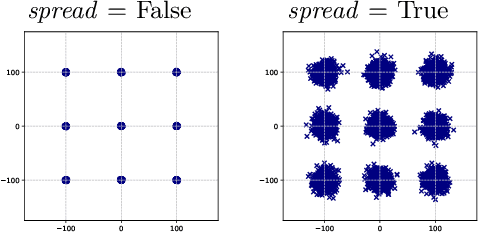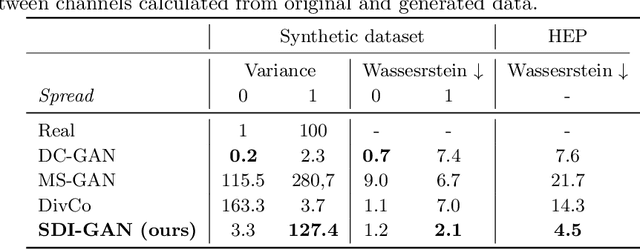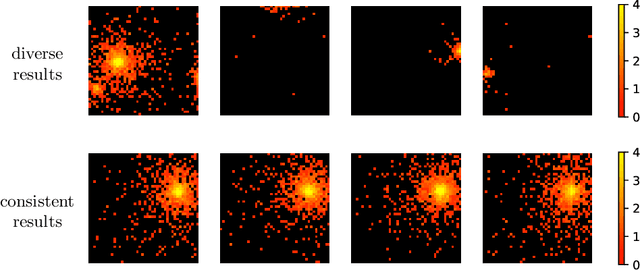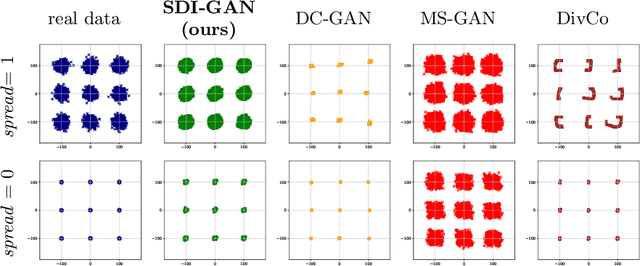Sandro Wenzel
Machine Learning methods for simulating particle response in the Zero Degree Calorimeter at the ALICE experiment, CERN
Jun 23, 2023Abstract:Currently, over half of the computing power at CERN GRID is used to run High Energy Physics simulations. The recent updates at the Large Hadron Collider (LHC) create the need for developing more efficient simulation methods. In particular, there exists a demand for a fast simulation of the neutron Zero Degree Calorimeter, where existing Monte Carlo-based methods impose a significant computational burden. We propose an alternative approach to the problem that leverages machine learning. Our solution utilises neural network classifiers and generative models to directly simulate the response of the calorimeter. In particular, we examine the performance of variational autoencoders and generative adversarial networks, expanding the GAN architecture by an additional regularisation network and a simple, yet effective postprocessing step. Our approach increases the simulation speed by 2 orders of magnitude while maintaining the high fidelity of the simulation.
Selectively increasing the diversity of GAN-generated samples
Jul 07, 2022



Abstract:Generative Adversarial Networks (GANs) are powerful models able to synthesize data samples closely resembling the distribution of real data, yet the diversity of those generated samples is limited due to the so-called mode collapse phenomenon observed in GANs. Especially prone to mode collapse are conditional GANs, which tend to ignore the input noise vector and focus on the conditional information. Recent methods proposed to mitigate this limitation increase the diversity of generated samples, yet they reduce the performance of the models when similarity of samples is required. To address this shortcoming, we propose a novel method to selectively increase the diversity of GAN-generated samples. By adding a simple, yet effective regularization to the training loss function we encourage the generator to discover new data modes for inputs related to diverse outputs while generating consistent samples for the remaining ones. More precisely, we maximise the ratio of distances between generated images and input latent vectors scaling the effect according to the diversity of samples for a given conditional input. We show the superiority of our method in a synthetic benchmark as well as a real-life scenario of simulating data from the Zero Degree Calorimeter of ALICE experiment in LHC, CERN.
End-to-end Sinkhorn Autoencoder with Noise Generator
Jun 11, 2020



Abstract:In this work, we propose a novel end-to-end sinkhorn autoencoder with noise generator for efficient data collection simulation. Simulating processes that aim at collecting experimental data is crucial for multiple real-life applications, including nuclear medicine, astronomy and high energy physics. Contemporary methods, such as Monte Carlo algorithms, provide high-fidelity results at a price of high computational cost. Multiple attempts are taken to reduce this burden, e.g. using generative approaches based on Generative Adversarial Networks or Variational Autoencoders. Although such methods are much faster, they are often unstable in training and do not allow sampling from an entire data distribution. To address these shortcomings, we introduce a novel method dubbed end-to-end Sinkhorn Autoencoder, that leverages sinkhorn algorithm to explicitly align distribution of encoded real data examples and generated noise. More precisely, we extend autoencoder architecture by adding a deterministic neural network trained to map noise from a known distribution onto autoencoder latent space representing data distribution. We optimise the entire model jointly. Our method outperforms competing approaches on a challenging dataset of simulation data from Zero Degree Calorimeters of ALICE experiment in LHC. as well as standard benchmarks, such as MNIST and CelebA.
 Add to Chrome
Add to Chrome Add to Firefox
Add to Firefox Add to Edge
Add to Edge